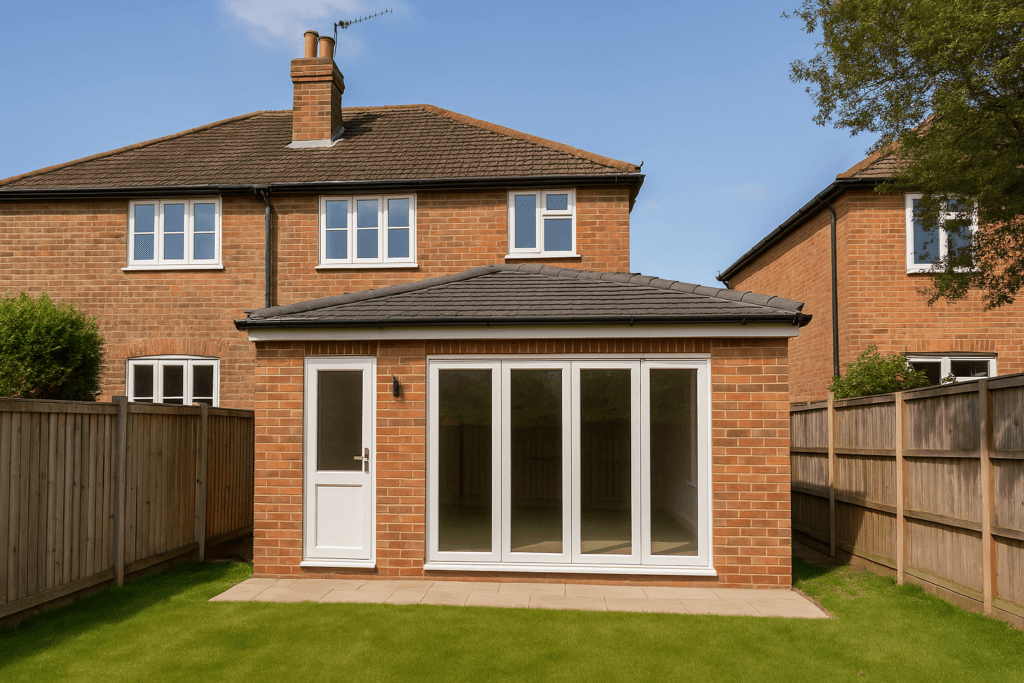What is permitted development?
When planning improvements to your home or property, one of the first questions you may ask is: Do I need planning permission? In many cases, the answer might be no — thanks to something called permitted development rights.
Permitted development refers to certain types of work that can be carried out without the need to apply for full planning permission. These rights are granted by the government through national legislation—specifically the Town and Country Planning (General Permitted Development) (England) Order 2015, commonly referred to as the GPDO.
Local authorities cannot alter permitted development rights, they can only remove them in certain circumstances. See below for more information.
Permitted development rights allow property owners to make changes such as small extensions, loft conversions, and changes of use—provided the work meets specific conditions and limitations.

Common Examples of Permitted Development
Here are some of the more common types of developments that may be allowed under permitted development:
- Rear and side extensions to houses, within size limits ( re up to 3m on semi / terraced or 4m on detached) – see this page for more information
- Loft conversions, including dormer windows (with height and volume restrictions) – see this page for more information
- Outbuildings, such as garages, sheds or garden offices – see this page for more information
- Porches, up to 3m² in floor area – see this page for more information
- Solar panels on roofs – see this section for more information
- Fences and walls, up to 2m in height or 1m next to highways – see this page for more information
- Changes of use from commercial to residential – see this section for more information
- Agricultural barns – see this page for more information
- Commercial extensions to shops, offices etc. – see this page for more information
- And much more! (over 200 of them!)
It’s important to remember that what is allowed under permitted development can vary depending on the type of property, its location, and whether any restrictions apply.
Are There Limits to Permitted Development?
Yes — permitted development rights come with conditions and limitations. Some key things to be aware of include:
- Size and height restrictions on extensions and roof alterations
- Proximity to boundaries—especially for extensions, porches etc.
- Design and materials must often match the existing building (except conservatories)
- Balconies and verandas are usually not permitted
You should check the relevant pages here on Planning Geek for all the limits. This page is an index of all PD rights.In some areas — such as conservation areas, National Parks, or National Landscapes (Areas of Outstanding Natural Beauty (AONBs)) — permitted development rights are more restricted.
Listed buildings will also limit permitted development rights. But locally listed or Non-Designated Heritage Assets do not.
Flats and maisonettes also do not usually benefit from the same rights as houses and will be limited to items such as fences, painting, car charging points etc.
Removal of PD Rights
Local authorities can remove certain permitted development rights through what’s known as an Article 4 Direction. This is commonly applied in conservation areas to prevent changes that may harm the character of the area — such as removing traditional sash windows or altering shop fronts. They can also remove changes of use to HMOs.
If an Article 4 Direction applies to your property, you’ll need to submit a planning application even for minor changes.
However, you must check to see exactly what the Article 4 direction restricts. It might only impact the front elevation for example. See this section for more information on Article 4s.
Permitted development rights can also be removed via a decision notice on a previous planning application. Note that if that planning is not used, the rights are not removed.
Prior Approval
Some types of development — such as larger home extensions or erecting a new agricultural barn or certain changes of use—still require a “prior approval” process. This means notifying the local authority, who may assess the impact on matters such as traffic, noise, or amenity.
You won’t need a full planning application, but you must wait for the council’s decision before proceeding.
Always Check Before You Build
Permitted development can be a great way to make improvements to your home without the cost and delays of planning permission. However, the rules can be complex, and getting it wrong can result in enforcement action.
Before starting work, it’s always a good idea to:
- Check with the Planning Geek Website – the main index can be found here for all PD rights.
- Seek professional advice—especially for larger projects – book a Zoom session with Ian, if you are unsure.
- Apply for a Lawful Development Certificate (LDC) if you want formal confirmation your project is permitted. Planning Geek can assist you with that. See this page for a fee proposal.
Government guidance for householders can be found here.
Updated: 10th April 2025




